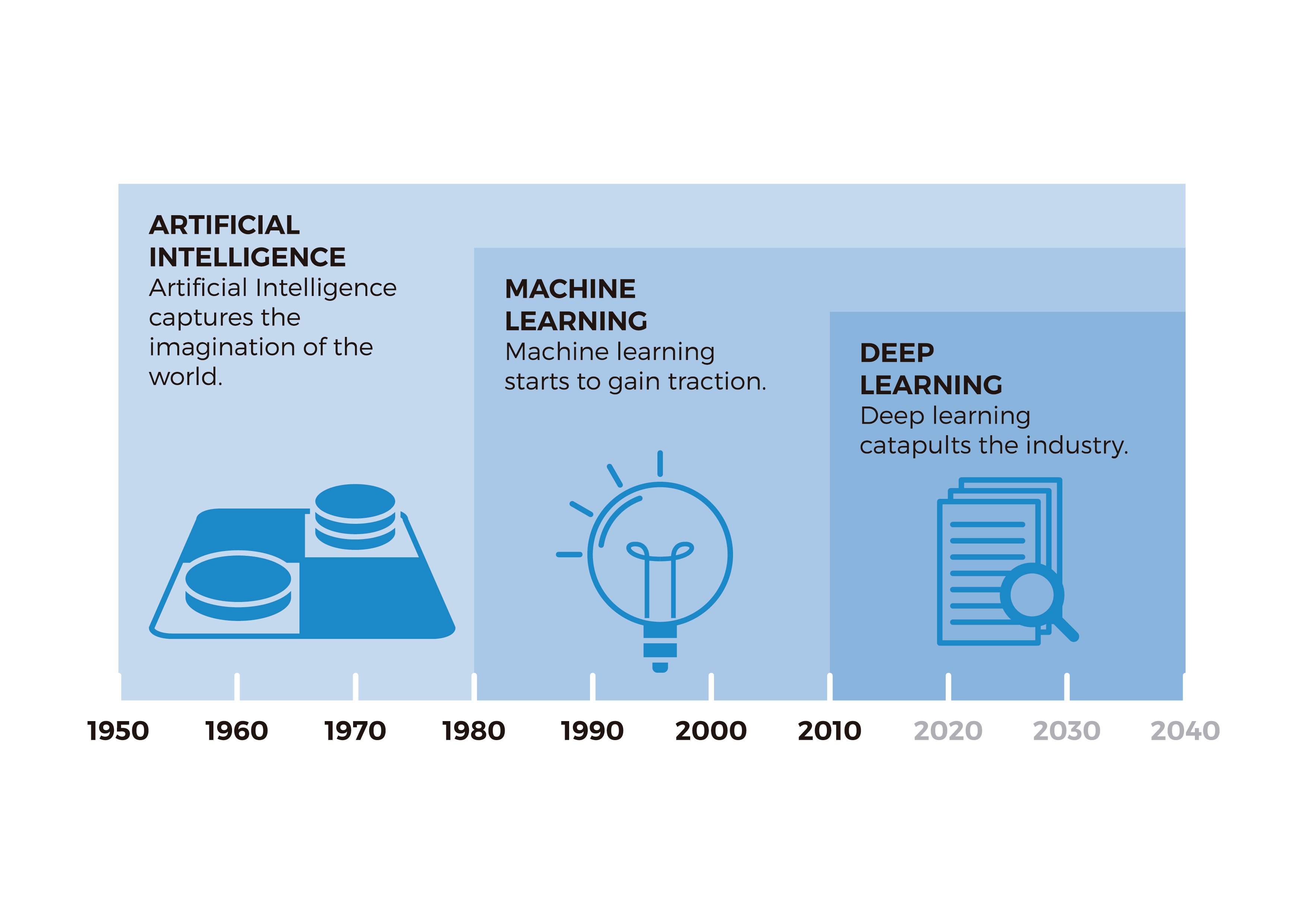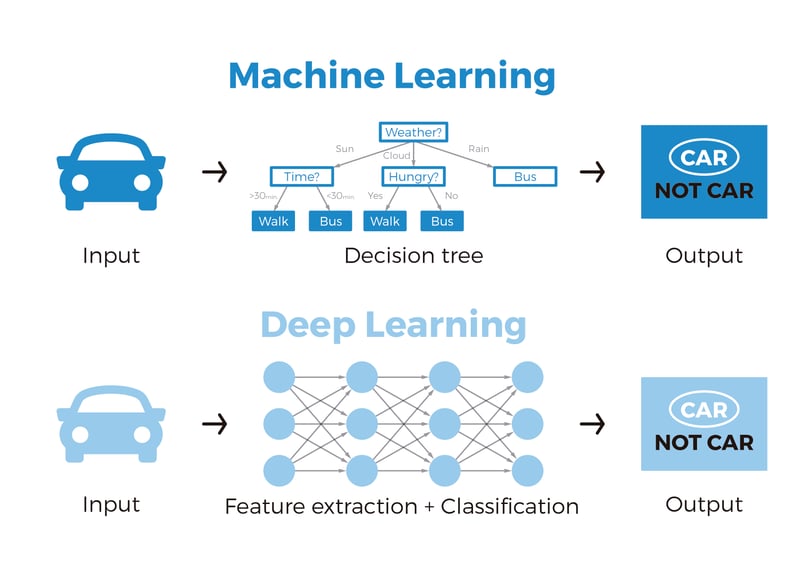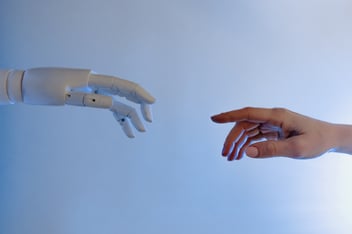What can we expect from deep learning in the future? We explore the different types of deep learning that are being applied and what they are used for.
Deep learning remains one of the most rapidly expanding branches of artificial intelligence. Since the emergence of AI chatbots such as ChatGPT, deep learning and its different techniques have gained a lot of attention. We explore what types of deep learning exist and what they are used for.

The discovery of deep learning triggered a revolution in everything from computer vision to natural language processing (NLP), providing unprecedented breakthroughs and transforming the way we interact with technology. Its ability to automatically extract patterns and attributes from data has raised the potential of artificial intelligence, allowing machines to perform complex tasks with astonishing accuracy.
Deep learning has experienced significant evolution, driven by the pace of new discoveries in various branches of artificial intelligence, leading to a proliferation of applications. Particularly noteworthy is its recent prominence in generative artificial intelligence, especially in natural language processing (NLP) and the development of large language models (LLM), exemplified by the creation of chatbots like ChatGPT and GPT-4.
While deep learning stands out as one of the trendiest technologies, comprehending its intricacies, including convolutional neural networks, recurrent neural networks, and transformative architectures, can prove to be complex.
In this article, we embark on a journey to explore the diverse branches of deep learning and endeavor to elucidate, in layman's terms, how these cutting-edge models have empowered machines to create, recognize, and comprehend the world around us.

What is deep learning?
Deep learning, a subfield of artificial intelligence (AI) and machine learning, revolves around training artificial neural networks to emulate the human brain's ability to "learn" and make decisions.
One of its most striking attributes lies in the utilization of multi-layered deep neural networks, which process and transform massive datasets to facilitate learning. Through this training process, the system gains the capability to discern patterns, extract meaningful features, and undertake complex tasks.
Deep learning has garnered significant success across diverse applications, ranging from image and speech recognition to natural language processing (NLP), recommender systems, and autonomous vehicles, among other fields. Its achievements have been truly remarkable.
What types of deep learning are there and what are they for?
Deep learning techniques can be classified according to the architecture and structure of the neural networks used.
Some of the main types of deep learning are listed below, although more techniques exist.
-
Feedforward Neural Networks (FNN): Also known as Multi-Layer Perceptrons (MLP), represent the simplest and foundational form of deep learning. They function with information flowing unidirectionally, exclusively from input layers to output layers, devoid of any feedback loops or connections. FNNs find wide application in tasks such as image classification, text analysis, and regression problems.
-
Convolutional Neural Networks (CNNs) have gained popularity for their exceptional performance in image and video-related assignments. Equipped with specialized convolutional layers, CNNs adeptly detect patterns and features within images, showcasing remarkable prowess in recognizing objects, shapes, and textures.
-
Recurrent Neural Networks (RNNs) cater to sequential data, such as time series or linguistic information. With loops that facilitate the retention of information over time, RNNs excel in tasks like speech recognition, language modeling, and translation.
-
Long-term Memory Networks (LSTM) are an intriguing variation of RNNs, specifically designed to address the leakage gradient problem. As a result, LSTMs demonstrate superior ability in capturing long-term dependencies in sequential data, presenting valuable solutions in various applications
-
Generative Adversarial Networks (GANs) stand out as a compelling duo of neural networks, consisting of a generative and a discriminative network, both trained together in a competitive process. GANs excel in generating realistic synthetic data, including images, audio, and text, making them a powerful tool in creative endeavors.
-
Autoencoders, on the other hand, function as unsupervised deep learning models, specifically designed for dimensionality reduction and feature learning. Comprising an encoder and a decoder, autoencoders aim to reconstruct input data, thereby facilitating effective feature extraction.
-
Transformer networks have emerged as a transformative neural network architecture. These networks utilize self-attentive mechanisms, enabling parallel processing of input data, which significantly enhances their ability to handle long-range dependencies.
-
Capsule networks present a novel architectural approach to boost feature learning efficiency. Rather than relying on individual neurons, capsule networks represent visual concepts as capsules, promising to push the boundaries of feature representation in visual tasks.
The mentioned examples are merely a glimpse of the diverse architectures employed in deep learning. Nevertheless, the field itself is undergoing rapid evolution, with researchers tirelessly crafting novel models and techniques to tackle the myriad challenges within artificial intelligence and machine learning. The relentless pursuit of advancement fuels the potential for groundbreaking discoveries yet to come.
What is deep learning used for?
Deep learning is used in a wide variety of applications in various fields due to its ability to learn complex representations and perform advanced tasks in an automated way. Some of the main areas where deep learning is applied are:
-
Computer Vision: Applied in diverse areas like object recognition, object detection, image classification, and image segmentation. Its applications range from enabling autonomous vehicles to enhancing security and surveillance systems, as well as supporting medical image analysis.
-
Natural Language Processing (NLP): Empowers speech recognition, machine translation, text generation, sentiment analysis, and the creation of chatbots, fostering more natural and intuitive interactions with computers and devices.
-
Healthcare and Medicine: Plays a pivotal role in medical diagnostics, utilizing medical image analysis and disease detection. Additionally, it finds applications in drug research and clinical data analysis, advancing healthcare practices.
-
Finance and Commerce: Contributes significantly to risk analysis, stock price prediction, fraud detection, and the optimization of trading strategies, driving innovation in the financial industry.
-
Games and Entertainment: Demonstrates remarkable capabilities in challenging board games such as chess and Go, surpassing human players. Additionally, it fosters creativity by generating art and generative music.
-
Robotics: Employs deep learning algorithms in the control and decision-making of autonomous robots, enabling them to navigate unfamiliar environments and undertake complex tasks.
-
Search and Recommendation: Enhances search engines and recommendation systems, optimizing the accuracy of search results and delivering personalized suggestions across various domains.
By leveraging deep learning across these domains, we continue to witness transformative applications that push the boundaries of technology and pave the way for exciting advancements in various industries.
The impact of deep learning in and outside technology
The impact of deep learning on society has been profound and transformative in various fields, enabling significant technological and social advances.
Some of the most outstanding advantages of deep learning that explain its impact are:
-
Representational Learning: Deep learning models excel in automatically learning hierarchical and meaningful data representations. By uncovering relevant features and patterns without the need for manual feature engineering, they streamline the learning process and enhance performance.
-
Superior Performance: Deep learning has consistently demonstrated state-of-the-art results in a wide range of tasks, including image and speech recognition, natural language processing, and mastering complex games like Go and chess.
-
Scalability: Deep learning exhibits excellent scalability, making it well-suited for handling large datasets and computing resources. As data availability and computing power continue to grow, deep learning models are capable of tackling increasingly intricate problems.
-
Versatility: Deep learning techniques boast versatility, finding applications across diverse domains, from computer vision and audio processing to natural language understanding and recommender systems. Its adaptability enhances its utility across various industries.
-
Automation: Leveraging the power of deep learning, complex tasks can be automated, significantly reducing the need for manual intervention and expediting decision-making processes.
-
Unleashing Future Potential: Deep learning remains an active and dynamic area of research, continuously pushing the boundaries of what's achievable in the realm of artificial intelligence. This promising technology holds the potential to address novel challenges and drive innovation across numerous sectors.
What is the difference between deep learning and machine learning?
It is common to confuse deep learning and machine learning, as they share many similarities. Both are branches of AI that focus on training models using algorithms that allow machines to learn from historical data and perform tasks without explicit programming. Furthermore, both technologies are often used for classification, clustering and prediction tasks.
- If you want to explore the differences between machine learning and deep learning in more depth, you can read this blog post: "What is the difference between machine learning and deep learning?"

Machine learning is a subset of artificial intelligence (AI) in which computers learn from data and make decisions without explicit programming. Deep learning, on the other hand, is a subset of machine learning that uses multi-layered neural networks to learn and make complex decisions from data.
Machine learning
Imagine you have a movie-loving friend whom you expose to a collection of films. Over time, your friend becomes adept at predicting which movies you'll enjoy based on your preferences. This is analogous to how machine learning operates. The computer, akin to your friend, processes the movies (data) and learns to make predictions without requiring explicit programming for each decision.
Deep learning
Now, let's delve into deep learning to gain a deeper understanding. Instead of solely showing the movies to your friend, you also provide additional specifics about what aspects you liked in each film, such as the actors, plot twists, scenery, and more. In this scenario, your friend, now the deep learner, gains knowledge not only from the movies but also from the detailed information you supply. This represents a more advanced form of machine learning, where the computer assimilates abundant and intricate information, represented by multiple layers in a neural network, to make highly accurate predictions.
To sum up, machine learning enables the machine to learn from data to make predictions, while deep learning represents a more potent iteration of machine learning, where the machine is trained with more detailed information to make sophisticated and precise predictions.
Does ChatGPT use machine learning or deep learning?
ChatGPT harnesses the power of both machine learning and deep learning techniques.
At its core, ChatGPT's architecture relies on a transformer, a deep learning model that excels at grasping contextual relationships within text. Through pre-training on an extensive corpus of text data using unsupervised machine learning, the model acquires a comprehensive understanding of language in a general sense.
In essence, ChatGPT ingeniously combines the strengths of machine learning (via pre-training) and deep learning (employing transformational neural networks), empowering it to interact with users conversationally and furnish thoughtful responses.
What to expect from deep learning in the future?
Deep learning stands as a technology brimming with untapped potential, poised to evolve in ways that could reshape our society beyond our current imagination, as experts forecast.
A captivating prospect lies in the future evolution of model architectures, captivating the efforts of researchers and scientists. Their goal is to craft more sophisticated and efficient neural networks, empowering the development of even more formidable systems. These enhanced architectures hold the promise of significantly boosting accuracy and speed in intricate tasks like computer vision, natural language processing, and decision-making.
Among the key priorities for deep learning developers is the automation and optimization of the training process. In the years ahead, the pursuit of advanced algorithms will intensify, aiming to reduce the time and data required to train models. Such advances will render deep learning more accessible and deployable across diverse applications and environments.
Furthermore, experts are focusing on enhancing the interpretability and reliability of deep learning models. As deep learning infiltrates critical fields like medicine and law, the ability to comprehend and explain the decision-making process of models becomes indispensable. Initiatives will be directed towards developing techniques that render models more transparent and reliable, instilling confidence in their application in high-stakes scenarios.
The pursuit of transfer learning and generalization holds immense significance in research endeavors. The capability to leverage knowledge gleaned from one task to enhance performance in another related task will be instrumental in making deep learning more efficient and effective.
Expect deep learning to converge with other disciplines, such as neuroscience and quantum computing, enabling a deeper understanding of algorithmic functioning and bolstering their performance across an array of applications.
In the realm of robotics and human-machine interaction, deep learning assumes a pivotal role. Its application will drive the development of robots and autonomous systems that can collaborate and communicate more intelligently with humans, ushering in new possibilities in industrial automation, autonomous transport, and everyday task assistance.
In conclusion, the future of deep learning beckons with thrilling advances and developments. As progress continues in model architectures, training optimization, interpretability, knowledge transfer, and cross-disciplinary integration, deep learning will stand as an unyielding driver of innovation, revolutionizing our interactions with technology in every facet of life.



